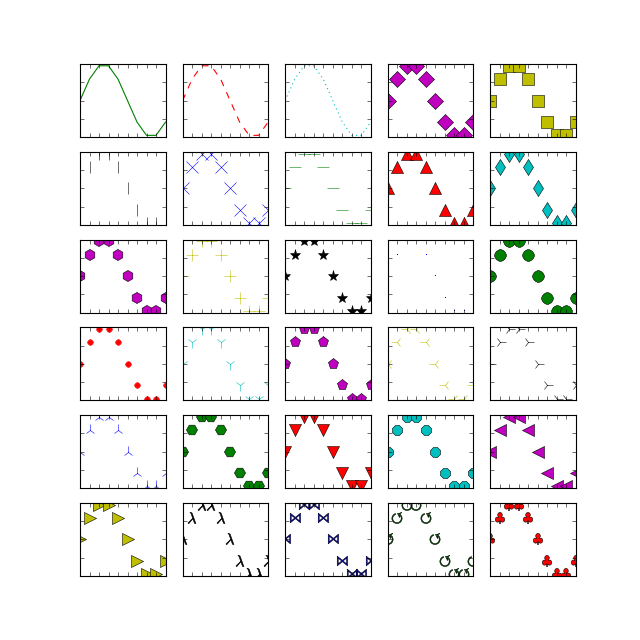

(Source code, png, hires.png, pdf)

#!/usr/bin/env python
# This should probably be replaced with a demo that shows all
# line and marker types in a single panel, with labels.
import matplotlib.pyplot as plt
from matplotlib.lines import Line2D
import numpy as np
t = np.arange(0.0, 1.0, 0.1)
s = np.sin(2*np.pi*t)
linestyles = ['_', '-', '--', ':']
markers = []
for m in Line2D.markers:
try:
if len(m) == 1 and m != ' ':
markers.append(m)
except TypeError:
pass
styles = markers + [
r'$\lambda$',
r'$\bowtie$',
r'$\circlearrowleft$',
r'$\clubsuit$',
r'$\checkmark$']
colors = ('b', 'g', 'r', 'c', 'm', 'y', 'k')
plt.figure(figsize=(8,8))
axisNum = 0
for row in range(6):
for col in range(5):
axisNum += 1
ax = plt.subplot(6, 5, axisNum)
color = colors[axisNum % len(colors)]
if axisNum < len(linestyles):
plt.plot(t, s, linestyles[axisNum], color=color, markersize=10)
else:
style = styles[(axisNum - len(linestyles)) % len(styles)]
plt.plot(t, s, linestyle='None', marker=style, color=color, markersize=10)
ax.set_yticklabels([])
ax.set_xticklabels([])
plt.show()
Keywords: python, matplotlib, pylab, example, codex (see Search examples)